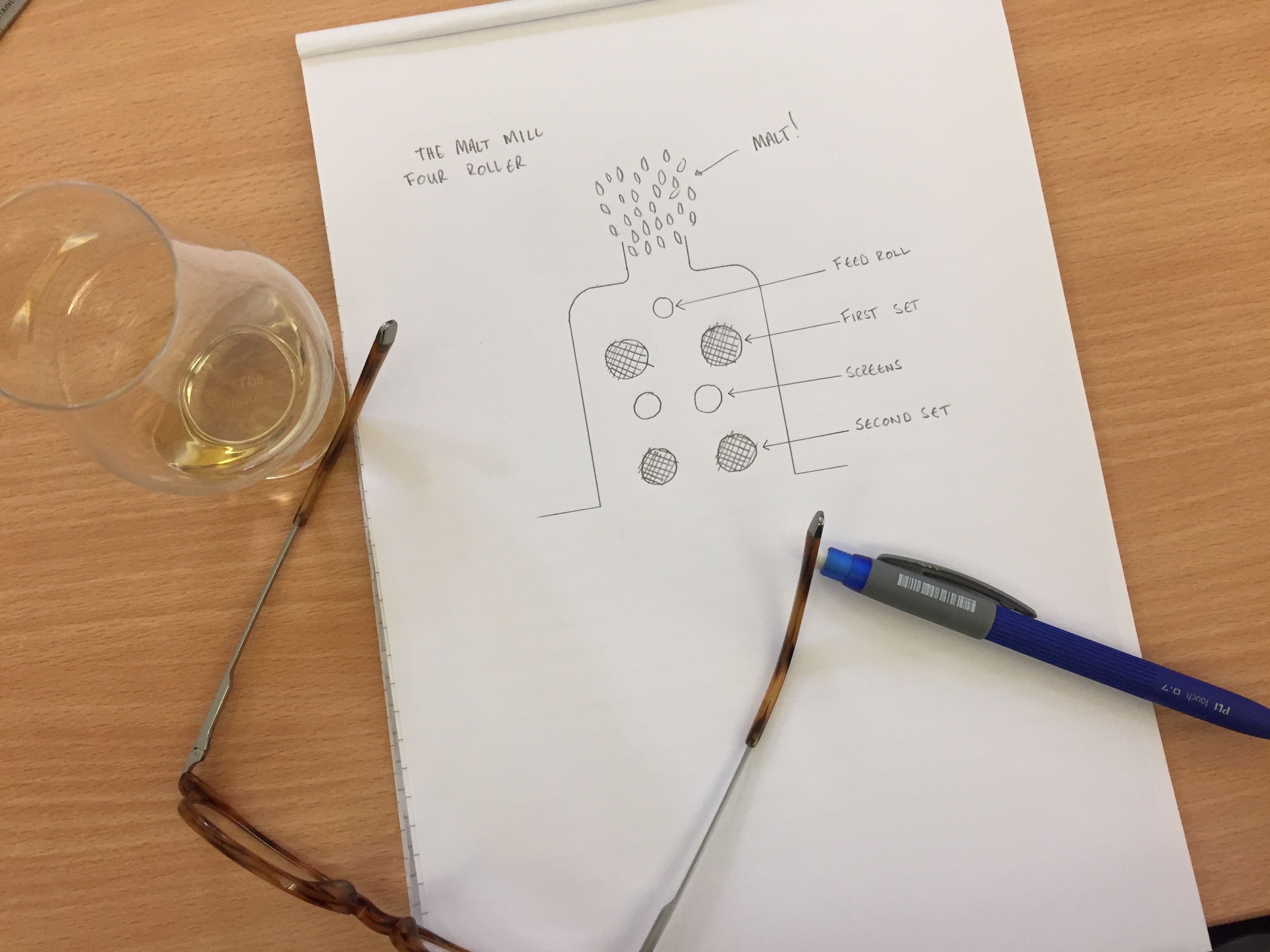Geek Desk #3 - The Will To Mill
Bought to you by Andy Bell.
Get your hands on the geek desk before anyone else as well as other insider information by signing up to become an Arran White Stag member.
Parts of any given distillery tour that are most likely (though not always!) to be glossed over, or sped past, in an attempt to get to the more “exciting” parts where ethanol rears its boozy little head are the processes of milling and mashing. Any geek worth his/her salt will find these processes as fascinating as any discussion about cut points or fermentation times. Today let’s have a look at one of these vital parts of the whisky making process and see how it can make or break a successful production cycle. Put on your seat belts, this is a long one.
The Mill
Cereal mills are used in many different agricultural applications; the intended use for the processed grain dictating what specification of mill is required. For the production of animal feed, for example, a very rough ground cereal is needed, thus a basic two roller mill will do. In whisky production, four and six roll mills are the most common. Their purpose is to break open the endosperm of the barley to expose the starch granules to the endogenous enzymes (if you’re scratching your head see geek desk 1!). Despite the perception of being rather a “blunt instrument” they are actually very precise pieces of machinery and so much more fascinating than ‘shoogle-box’ gimmicks and “it never breaks down!” clichés. The pairing of the ideal type of mill – set correctly – with the intended wort separation vessel can be the difference between producing beautiful, clear, bright worts and a pile of useless porridge. Let’s take a look under the bonnet of the humble malt mill!

The four roll mill– the most common in single malt production.
- Feed Roll – controls how quickly malt flows into the mill
- First Pair – crack open the malt to reveal that starchy, enzyme rich goodness
- Screens – some particles are already fine enough and don’t need to be crushed again, they go straight through. The speedy boarding queue at the airport. But for malt. Never mind…
- Second pair – further crush the coarse particles to the correct grade
Other mill types include; six roll mill – for less malted/modified malts, not quite so common in scotch whisky; Hammer mill – more common in grain distilleries where mash tuns are not present and good husks are not vital to the process. Produce a fine grind and maximise enzyme content.
The mill and the mash tun are like the Laurel and Hardy, the Penn and Teller, the Lennon and McCartney, the McFadden and Whitehead of the distillery. Both good on their own, but definitely better alongside the other. The type of mash tun, or to give it its Sunday name “wort separation vessel” to be used defines how the mill should be set. Get it too coarse and the starch won’t be accessible to enzymes, get it too fine and you’ll create something between Scott’s Porridge oats and cement. Get it right and you will achieve excellent, bright, high gravity worts – the key to the door that leads to a good fermentation and a fruity new make.
So what constitutes right and wrong? At Arran we use a Lauter tun (more about this in the next G.D.) – this requires a ratio of:
- Husks – 15%
- Coarse Grits – 25%
- Fine Grits – 30%
- Flour – 30%
The presence of a quantity of husks in any mash is very important. They sink to the bottom of the vessel and act as a filter, also ensuring that the whole mash doesn’t sink to the bottom of the vessel and stick there until an unfortunate mashman (i.e. the youngest one) has to get in there with a shovel and dig it out!
Anyone reading this who has been on a distillery tour will most likely have scoffed at the warnings of the explosive atmosphere inside the still house. In truth, the mill room poses a greater risk in this regard. Any area where fine dust is produced in any great quantity has to be well ventilated and treated with real caution as the atmosphere itself becomes highly flammable. For this reason most mills have strong magnets inside which trap any metal particles that could have become mixed in with the malt in processing and transportation. Should one of these create a spark in a poorly ventilated mill room, a large bang may well follow…
Nature’s will to grow the barley, the energy to harvest and the skill in malting would all go to waste were it not for a good, well calibrated mill. Next time you walk through a distillery mill room, take a moment to acknowledge just how vital these rumbling giants are to the whole process.